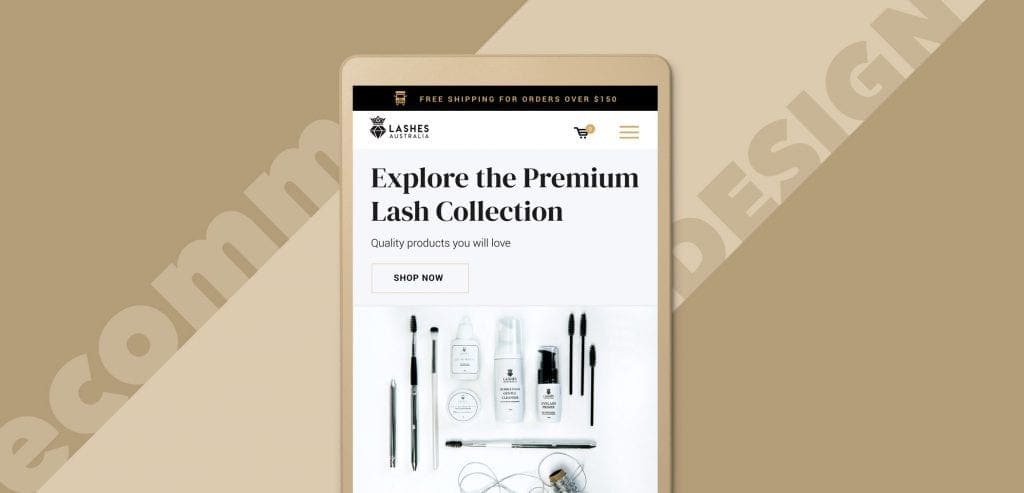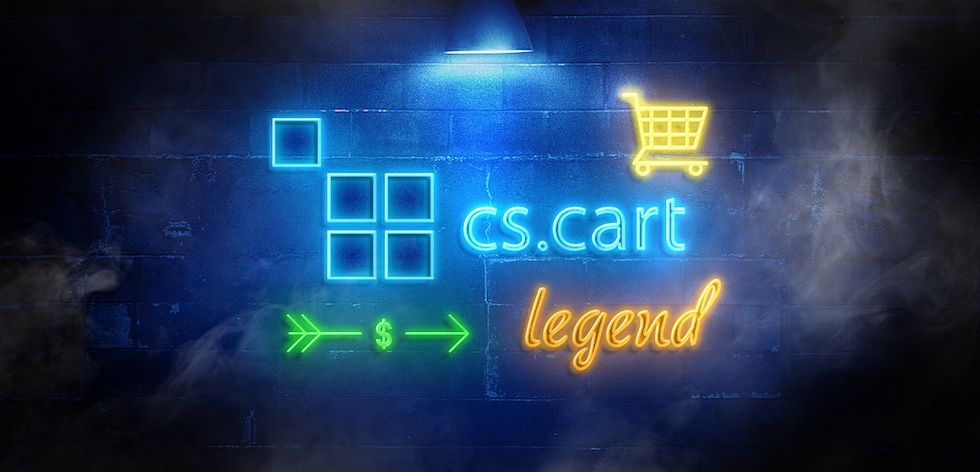Are you trying to hire the right eCommerce website developer? Chances are you may want to take a few steps back.
The worst mistake businesses make when trying to hire a developer or design agency is to jump straight to the hiring phase, skipping the crucial planning steps that lead to a great business-vendor partnership.
In other words, if you don’t know exactly what type of eCommerce site you’re looking to build and why you’re trying to build it, how will you know who should built it?
On top of that, how will you help your chosen design agency complete the project successfully? What does success even look like?
Rather than just picking up the phone and calling a selection of digital agencies, I suggest starting with the five steps below.
After all, any quality web development agency will ask you these questions anyway, so it’s best to be prepared.
1. Establish Your Critical KPIs
Before you even think about who is going to develop your eCommerce website, you first have to determine why you need to build it.
What does success look like to your business? How will you track your success? How do you imagine your new website will contribute to those metrics?
Once you’ve clearly established those KPIs, you’ll have a much better sense of what it is you’re looking for in an eCommerce website.
Not only will predetermined KPIs help you establish parameters for your next site, it will also help give your prospective digital agencies a better understanding of your goals.
Here’s something to keep in mind: You don’t always have to tell a great agency what to build. If you can clearly explain your goals, they should be able to develop a plan with you.
With clearly defined KPIs, each side will have a predetermined measuring stick to track their success against. Expectations will be clear.
But determining KPIs is easier said than done. Where do you start?
Start with your sales funnel.
How do people move through your buying process? Clearly document each step. Then, at each step of the funnel, determine which KPIs accurately reflect success along the way.
Need more help determining your KPIs? Here a few examples to help you get started.
Macro Conversions
Macro conversions are your main measurable KPIs from your website, which are most likely to reflect the main KPIs of your business.
– Revenue-Based Conversion
How much revenue are you making from your site visitors?
– Lead-Acquisition-Based Conversion
How many site visitors are turning into viable leads or paying customers?
– Enquiry-Based Conversion
How many visitors are filling out forms or contacting your business?
Micro Conversions
Micro conversions are smaller engagements that you expect to eventually lead to macro conversions.
– Navigation-Based Conversion
Did a visitor end up navigating to a particular page?
– Interaction-Based Conversion
Are visitors completing a particular action, like clicking a button?
– Engagement-Based Conversion
Are visitors signing up for your newsletter? Are they liking or sharing your pages?
Once you’ve determined how you want to measure your success, it’s finally time to start searching for design inspiration.
2. Find competitor websites you love
There’s no need to reinvent the wheel.
To figure out what you want out of your custom eCommerce website, look for shining examples of websites that you love interacting with.
Ultimately, your goal is to create the best possible experience for your customers. So while you want to offer something unique and engaging, you also want to maintain a sub-consciously familiar shopping experience.
If your competitor has a winning formula, take it as an opportunity to build off their success with something even better.
Complete an audit of your competitors’ websites by taking screen grabs and adding notes that highlight what you like, or dislike. Then, brainstorm how to improve upon what they’ve already built.
Answer the following questions about each of your competitors’ sites:
Design Inspiration
- What design elements do you like?
- What does their product catalog/gallery look like?
- How do visitors navigate between products?
- What do you like about their website?
- What don’t you like about their website?
Feature Inspiration
- What features does the website have?
- What features do you feel their website is missing that should be included in your site?
- Do they have different payment methods? Will you be offering the same payment methods?
SEO Inspiration
- What keywords is the website targeting? Would these keywords be relevant to your website as well?
- Does the site rank well? Why or why not?
- How is the website’s page hierarchy structured? Is it flat or nested?
- Does the website have a blog? (if not it should have)
- Does it load quickly?
Answering these questions about your competitors will paint a clearer picture of what you want out of your own eCommerce website.
By the way, if you’re struggling to put your thoughts on paper, try using a free video recording tool like Loom to easily record the features or elements you love as you use them.
3. Find non-competitor sites you love even more
What happens if your competitors’ websites just aren’t any good?
Well, that’s great news for you!
In all seriousness, a lack of great comparables can be a challenge when designing a custom eCommerce site. While it’s great to be an innovator in your line of business, it’s more work to be a leader.
That’s why we recommend looking outside your industry to find non-competing sites to draw inspiration from. The good news is that there are plenty of amazing eCommerce websites out there, and it’s likely that an innovation in another industry would easily translate to yours.
The more you widen your search, the better equipped you’ll be when the time comes to communicate your needs to your selected digital agency.
Here are some more considerations to take into account when judging websites:
- Does it work well on mobile?
- Did you hesitate or become confused at any point?
- Was the checkout process quick and easy?
- Did you feel confident and secure in making a purchase?
- Where you happy to opt-in to their newsletter?
Imitation is the best form of flattery. But why stop there? To win over the competition, you’ll have to take things one step further.
4. Determine your key deliverables
Is it time to hire a digital agency yet?
Not quite.
Next, you’ll want to actually determine which elements you’re going to build into your eCommerce site. In other words, you want to determine your key deliverables, or the project scope.
While your KPIs measure your success, your key deliverables are the website tools, elements, and features that you believe will help you achieve your goals.
Here are a few questions you should ask yourself:
- How do I want customers to flow through the purchasing process on my website and what elements will that process require?
- How do I want customers to browse products on my website and what elements will that process require?
- How do I want my website to encourage conversion and what elements will that require?
And of course, any great developer will help work with you to refine these deliverables. Your developer can help you design the details, and help guide you through questions like whether you should go with WooCommerce over another eCommerce platform, but going in, you should have an idea of what the overall customer journey will look like.
4.5 By the way, don’t forget shipping
Shipping?
Yes, shipping! Shipping deserves a section all of its own!
As experienced custom eCommerce website developers in Melbourne, we find that shipping is the most overlooked feature by prospective clients.
Before you start the design process, answer these questions:
- Will you be offering free shipping?
- Who or how will a user qualify for free shipping?
- Do they have to spend a certain amount to qualify?
- If you do not offer free shipping, will you base your shipping charge on a flat rate, or based on state, country, or some other method?
- Will you integrate a third-party shipping calculator like Transdirect that will provide your users with a variety of shipping quotes to choose from, based on their delivery address?
- Are there postcodes, state or countries that you do not what to ship too?
You can see how all of these questions quickly add up. By thinking out your key deliverables in full, you’ll be able to compile a thorough wishlist for your new site.
5. Identify Key Stakeholders
Don’t worry. We’re almost there.
The final step before hiring a digital agency is to identify the key stakeholders for each deliverable and KPI.
What do we mean by stakeholders? They’re the people who will affect your KPIs and deliverables.
First, you’ll have internal stakeholders. These are the members of your business—including employees, managers, owners, and more—that will be responsible for ensuring each KPI and deliverable is met.
Then you have your external stakeholders. These are those outside your company who are affected by the decisions you make. They includes your customers, your shareholders, suppliers, and your website design agency.
Ask yourself: Which stakeholders will be responsible for ensuring each KPI is achieved and each deliverable is completed? How will the other shareholders be impacted by each decision?
Going back to our shipping example, who in your organization will decide what shipping methodology you’ll go with? Who will decide how it is implemented on your website? Do external stakeholders need to be consulted? Who is allowed to requested changes? Who will give final approval of the design? Who will be responsible for evaluating the success of the design after it has launched?
In the case of custom eCommerce site design, your internal stakeholders will act as your connection to your chosen design agency. Your stakeholders will play the role of quality assurance and safety net, making sure that the agency has clear expectations, and that they deliver what they’ve promised.
The more you clearly lay out these responsibilities in advance, the easier it will be to develop your custom eCommerce site with your chosen developer, and the more successful the resulting site will be.
Now that you’ve identified your KPIs, your competitors, your preferences, your deliverables, and your stakeholders, you’re finally ready to hire a custom design agency.
Happy website building!
—
At Fox and Lee, we create beautiful and practical solutions. Our Melbourne-based custom WordPress development and design firm can take your business from good to great—with a website that dominates the competition.
Ready to get started? Click here to fill out our web form now



